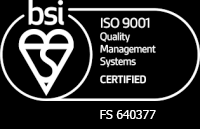The Key to Growth Success – Separating Strategy from Goals in UK Manufacturing
In the ever-evolving landscape of UK manufacturing, businesses are continually challenged to adapt to technological advancements, regulatory changes and shifting market demands. Growth remains a priority for most organisations but achieving it sustainably and consistently requires more than just setting ambitious targets. To truly thrive, UK manufacturers must recognise the critical distinction between strategy and goals.
Understanding Goals and Strategy
Goals are the milestones a business aims to achieve. For manufacturers, these might include increasing annual production by 20%, reducing waste by 30%, or expanding into international markets. Goals provide a sense of direction and serve as tangible measures of success.
On the other hand, strategy is the overarching plan that outlines how to achieve these goals. It encompasses the decisions and processes required to move the organisation forward. While goals answer the question “What do we want to achieve?”, strategy answers “How will we achieve it?”
Why Separating Strategy from Goals is Crucial
Many UK manufacturers fall into the trap of conflating strategy with goals. This confusion can lead to poorly executed plans and misaligned priorities leading to missed opportunities.
Here’s our view on why maintaining a clear distinction is essential:
Clarity and Focus
When goals and strategy are conflated, it’s easy for teams to become overwhelmed or misdirected. Separating the two allows manufacturers to clarify their priorities and focus on actionable steps. For instance, if the goal is to improve productivity, the strategy might involve investing in automation or workforce training. Clearly defined strategies ensure that every team member understands their role in achieving the broader objectives.
Flexibility in Execution
The manufacturing industry is subject to unexpected disruptions, from supply chain issues to shifts in consumer demand. A well-defined strategy provides a flexible framework that can adapt to changing circumstances, while the goals remain constant. For example, if a key supplier fails to deliver, a robust strategy might include contingency plans to source materials locally, ensuring progress toward the goal isn’t derailed.
Resource Optimisation
Achieving ambitious goals often requires significant investments of time, money, and personnel. A sound strategy helps manufacturers allocate resources effectively, avoiding wasteful expenditures. By separating strategy from goals, businesses can evaluate whether their plans are cost-effective and align with long-term objectives.
Measurement and Accountability
Goals provide the benchmarks for success, but without a strategy, it’s impossible to evaluate progress accurately. A clear strategy includes measurable actions and milestones that can be tracked and reviewed. This separation enables manufacturers to identify what’s working, make necessary adjustments, and hold teams accountable for their contributions.
Steps to Align Strategy and Goals for Growth Success
To unlock growth success, UK manufacturers can take the following steps:
Define SMART Goals – Ensure goals are Specific, Measurable, Achievable, Relevant, and Time-bound. For example, “Reduce energy consumption by 15% within two years.”
Develop a Comprehensive Strategy – Outline the steps required to achieve each goal. Include key actions, timelines, and resource requirements. For the above goal, the strategy might involve conducting energy audits, investing in energy-efficient machinery, and implementing employee training programmes.
Engage Stakeholders – Involve teams across the organisation in the strategy development process. Their insights can help identify potential challenges and opportunities.
Monitor Progress – Regularly review both the strategy and the goals to ensure they remain aligned and relevant. Use key performance indicators (KPIs) to track progress and adjust plans as needed.
Foster a Culture of Continuous Improvement – Encourage innovation and adaptability within the organisation. A dynamic strategy is more likely to succeed in a fast-paced manufacturing environment.
For UK manufacturing to achieve sustainable growth, separating strategy from goals is not just a best practice, it’s a necessity.
By defining clear objectives and crafting actionable strategies, manufacturers can navigate industry challenges with confidence, optimise resources, and foster long-term success. In a competitive global market, this disciplined approach could be the differentiator that sets UK manufacturing apart as a leader in innovation and excellence.
“It is critical for business owners to understand the difference between goals and strategy, I meet many business owners who have really exciting, stretching goals, but fall short due to the the lack of a clear strategy. A strategy must include actions, responsibilities and timelines so that progress can be measured…”
Jeff Long
Specialist Consultant





